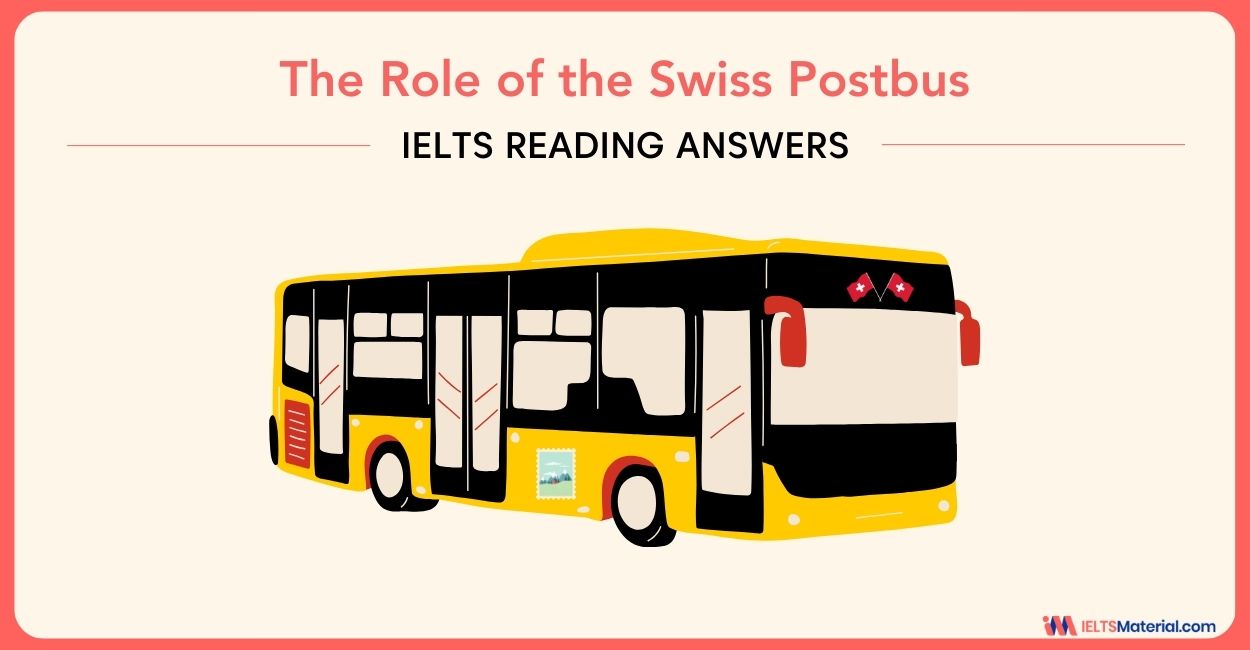Guide To Employees On Workplace Monitoring & International Experience Canada - IELTS Reading Answers
Want to practice IELTS General Reading Passages? Dive into the strategies and the question types for Guide To Employees On Workplace Monitoring & International Experience Canada - IELTS Reading Answers and score a band 8+ in the IELTS Exam.
Table of Contents
- Types of Questions in Guide To Employees On Workplace Monitoring & International Experience Canada - IELTS Reading Answers
- Band 8+ Strategies to Attempt Guide To Employees On Workplace Monitoring & International Experience Canada - IELTS Reading Answers
- Reading Passage 1 - Guide To Employees On Workplace Monitoring
- Reading Passage 2 - International Experience Canada
- Answers with Location and Explanation for Guide To Employees On Workplace Monitoring & International Experience Canada - IELTS Reading Answers

Limited-Time Offer : Access a FREE 10-Day IELTS Study Plan!
The General Reading passages, ‘Guide To Employees On Workplace Monitoring’ & ‘International Experience Canada’ serve as a valuable resource for IELTS Reading test preparation. Typically, one of the most difficult sections is the IELTS Reading task where you have only 60 minutes to complete. Engaging with the reading topic completely will enhance the quality of your preparation.
With consistent practice, you will be able to explore the strategies to be used and answer all questions within the given time frame. You are able to score more bands in the Reading Section and also check with the provided answers. Therefore, it is important to understand what questions you may be faced with and how you need to approach them to increase your performance. Practising on a regular basis is the key to achieve the targeted band score in the IELTS Exam.
Let's get started!
Connect with our band 9 IELTS Trainers to crack your IELTS Reading in no time! Book a FREE Demo.
Types of Questions in Guide To Employees On Workplace Monitoring & International Experience Canada - IELTS Reading Answers
Both Guide To Employees On Workplace Monitoring’ & ‘International Experience Canada’ passages provide insight into the question types in IELTS General Reading, aiding in familiarizing yourself with the exam format and difficulty levels. Therefore, you will need some strategies which will help you reach your goal and achieve your desired score of 8+. This will help you to do a targeted study and understand each of the question types.
The question types in these reading passages include:
- IELTS Reading Note Completion (Q. 1-7)
- IELTS Reading Flowchart Completion (Q. 8-13)
Not sure how to answer flowchart completion questions? Check out the video below!
Band 8+ Strategies to Attempt Guide To Employees On Workplace Monitoring & International Experience Canada - IELTS Reading Answers
As you get ready for the IELTS General Reading, attempting the passages will need proper handling of time and recognition of keywords in order to answer it properly. In the passages, 'Guide To Employees On Workplace Monitoring & International Experience Canada', there are certain strategies which will guarantee your success and help you achieve band 8+. The following are the tips which you can incorporate as you attempt the passages and with practice, get your desired band scores.
- Go through every single question as it will make sure that you know exactly what to look for in the passage. Remember to not read the passage completely before going through the questions, as it will waste your time. Always look at the questions first and then read the passage since you will be aware of the information which you are trying to find.
- Focus on the keywords given in the question such as the names, dates, actions or any descriptive words. You will develop the ability to scan the provided information in the passage. As you practice, try to identify How to Ace IELTS Reading with 'Keyword Technique'.
- Make sure that to go through the entire passage just once towards the end so that you have a general overview of what information is contained in each section without reading every word.
- Don't guess your answers exclusively based on the keywords which you have got. Always look for the specific details that will allow you to use the given keywords and pinpoint the exact location of the information.
- Keep in mind that the questions asked will be paraphrased and therefore, synonyms will be used. Prepare yourself by analyzing the meaning of the questions and then focus on improving your IELTS Vocabulary because you will need it for the reading section.
- For the note completion questions, you need to first look at the information needed in the sentences. These will narrow down your options and make you select the right answers. In the case of flowchart type of questions, check the steps provided since that will help you to find the next answer.
- Always verify your flowchart answers by cross-checking against the full passage. Make sure they logically fit the sequence and meaning.
- Time Management for IELTS Reading is one of the important factors to consider. Always put the timer on as and when you attempt any questions or tests since these will prepare you for the final exam day. Therefore, do not spend a lot of time on a single question and restrict yourself to one minute per question.
- Since all the answers will be given in chronological manner, it is ideal to move to the next question if you find it difficult to find one answer.
Ready to discuss your queries on IELTS reading questions? Join IELTS Online Classes now!
Reading Passage 1 - Guide To Employees On Workplace Monitoring
| You should spend about 10 minutes on questions 1-7, which are based on Reading Passage 1 below. |
Guide To Employees On Workplace Monitoring
A. Employers have the right to monitor your activities in many situations at work. For example, your activities may be recorded on CCTV cameras, and your letters may be opened and read. In addition, your employer may use an automated software program to check the emails you receive at work. Phone calls may be listened to and recorded, and the log of websites you use may be checked.
What is workplace monitoring?
B. All of these forms of monitoring are covered by data protection law. Data protection law doesn’t prevent monitoring in the workplace. However, it does set down rules about the circumstances and the way in which monitoring should be carried out.
Before deciding whether to introduce monitoring, your employer should identify any negative effects the monitoring may have on staff. This is called impact assessment.
Monitoring electronic communications at work
C. Your employer can legally monitor your use of electronic communications in the workplace if the monitoring relates to the business and the equipment being monitored is provided partly or wholly for work.
Except in extremely limited circumstances, employers must take reasonable steps to let staff know that monitoring is happening, what is being monitored, and why it is necessary.
D. As long as your employer sticks to these rules, they don’t need to get your consent before they monitor your electronic communications, but only if the monitoring is for specific reasons. These may be to establish facts that are relevant to the business or to check standards, for example, listening in to phone calls to assess the quality of your work. Monitoring is also allowed if its purpose is to prevent or detect crime. It may be necessary to make sure electronic systems are operating effectively, for example, to prevent computer viruses from entering the system. Your employer is also allowed to listen in to any calls you make to confidential helplines, but in this case, he or she is not allowed to record these calls.
Questions 1-7
Complete the notes below.
Choose NO MORE THAN TWO WORDS from the text for each answer.
Write your answers in boxes 1-7 on your answer sheet.
Guide to employees on workplace monitoring
Your employer may monitor you at work by checking
- recordings of your activities
- your letters and (1) ……………………..
- your phone calls and which websites you have visited
Rules for monitoring are established by data protection law. This states that employers must carry out a procedure that is known as (2)……………………..before introducing monitoring,
In general, monitoring is legal if
- it relates to the business
- you are using (3)…………………..intended for work
- the worker has been informed
Monitoring may be used
- to evaluate the (4) ……………………. of your work
- to stop of find out about (5) …………………….
- to stop the possibility of (6) ……………………… affecting systems
- to check calls to (7) ………………………. (these cannot be recorded)
Reading Passage 2 - International Experience Canada
| You should spend about 10 minutes on questions 7-13, which are based on Reading Passage 2 below. |
International Experience Canada
- If you want to travel and work temporarily in Canada as part of International Experience Canada (IEC), your first step is to become a candidate in one or more IEC pools. There are three categories of pool: International Co-op (Internship), Working Holiday, and Young Professionals.
- To apply, first, use our questionnaire to see if you meet the criteria to get into the IEC pools. This should take you about ten minutes. You can find it at www.cic.gc.ca/ctc- vac/cometocanada.asp. After completing this, if you are eligible you will be sent a personal reference code, which you should use to create your online account. At the same time, you should fill in any remaining fields in your profile with the required information, including which IEC pools you want to be in. (Some parts will already have been completed for you.)
- If you are sent an invitation to proceed with your application, you will have 10 days to decide whether to accept this or not. If you accept, click the ‘Start Application’ button. You then have 20 days to complete your application.
- For the International Co-op and Young Professionals categories, your employer in Canada must pay the compliance fee and inform you of your offer of employment number. (This does not apply to the Working Holiday pool.)
- Once you have received this, you should then upload copies of police and medical certificates, if required. If you do not have these, you should upload proof that you have applied for them. You should then pay your participation fee of C$126 online by credit card. (There is an additional payment of C$100 if you are applying for the Working Holiday category.)
- Your application will then be assessed. You can apply to withdraw at this stage and will be given a refund if you do this within 56 days. If your application is successful, you will receive a letter of introduction which you can show to Immigration when you enter Canada.
Questions 8-13
Complete the flowchart below.
Choose ONE WORD AND/OR A NUMBER ONLY from the text for each answer.
Applying to International Experience Canada
Fill in the online 8……………….. get a personal reference code.
Create your 9………………….. provide the necessary information for the profile in your application.
If sent an invitation, you must accept this within 10 ……………
You then have a limited time to 11…………. the application.
Your 12……….. is required to send you an offer of employment number.
Upload copies of any necessary certificates or proof of application.
Make the payment for participation online. You may receive a 13……………………. …. you change your mind.
Answers with Location and Explanation for Guide To Employees On Workplace Monitoring & International Experience Canada - IELTS Reading Answers
Did you attempt to do the question and was the timer set? Now, it's time to check the answers to the passages with their location and explanation. This will help you evaluate your shortcomings and strengths, guiding you to modify your preparation strategy and score a higher IELTS Band Score.
| Answer | Question Type | Answer Location | Answer Explanation |
|
1. emails |
Note Completion | Para A, Line 3 | The passage states that “your letters may be opened and read”, indicating emails is the missing word. |
|
2. impact assessment |
Note Completion | Para B, Line 4 | The passage states “Before deciding whether to introduce monitoring, your employer should identify any negative effects the monitoring may have on staff. This is called impact assessment.”, indicating impact assessment is the missing phrase. |
|
3. equipment |
Note Completion | Para C, Line 3 | The passage states “Your employer can legally monitor your use of electronic communications in the workplace if the monitoring relates to the business and the equipment being monitored is provided partly or wholly for work.”, indicating equipment is the missing word. |
|
4. quality |
Note Completion | Para D, Lines 5-6 | The passage states “These may be to establish facts that are relevant to the business or to check standards, for example, listening in to phone calls to assess the quality of your work”, indicating quality is the missing word. |
|
5. crime |
Note Completion | Para D, Line 7 | The passage states “Monitoring is also allowed if its purpose is to prevent or detect crime.”, indicating crime is the missing word. |
|
6. (computer) viruses |
Note Completion | Para D, Line 9 | The passage states “It may be necessary to make sure electronic systems are operating effectively, for example, to prevent computer viruses from entering the system.”, indicating (computer) viruses is the missing phrase. |
|
7. (confidential) helplines |
Note Completion | Para D, Lines 10-11 | The passage states “Your employer is also allowed to listen in to any calls you make to confidential helplines, but in this case, he or she is not allowed to record these calls.”, indicating (confidential) helplines is the missing phrase |
|
8. questionnaire |
Flowchart Completion | Para 2, Line 1 | The passage states “To apply, first, use our questionnaire to see if you meet the criteria to get into the IEC pools.”, indicating questionnaire is the missing word in the flowchart. |
|
9. account |
Flowchart Completion | Para 2, Lines 3-4 | The passage states “After completing this, if you are eligible you will be sent a personal reference code, which you should use to create your online account.”, indicating the account is the missing word in the flowchart. |
|
10. 10 days |
Flowchart Completion | Para 3, Line 2 | The passage states “If you accept, you then have 10 days to decide whether to accept this or not.”, indicating 10 days is the missing number in the flowchart. |
|
11. Complete |
Flowchart Completion | Para 4, Line 1 | The passage states “You then have 20 days to complete your application.”, indicating Complete is the missing word in the flowchart. |
|
12. Employer |
Flowchart Completion | Para 5, Lines 1-2 | The passage states “For the International Co-op and Young Professionals categories, your employer in Canada must pay the compliance fee and inform you of your offer of employment number.”, indicating Employer is the missing word in the flowchart. |
|
13. Refund |
Flowchart Completion | Para 6, Lines 3-4 | The passage states “You can apply to withdraw at this stage and will be given a refund if you do this within 56 days.”, indicating Refund is the missing word in the flowchart. |
Enroll into our Free IELTS Webinar and learn more about techniques to improve your reading speed.
With diligent practice and using a few preparation techniques, you will be able to achieve a higher band score in the Reading section. Since there is time allotted for attempting the questions in this section, it is advised to use the timer. In this way, you will be able to simulate the exact environment which you will face in the final exam. So, don't stop here and practice more tests and familiarize yourself with the different question types and their specific strategies.
Check for More Reading Topics :
Also Check :

Start Preparing for IELTS: Get Your 10-Day Study Plan Today!
General Reading Practice Tests

Kasturika Samanta

Nehasri Ravishenbagam

Kasturika Samanta
Recent Articles

Kasturika Samanta

Kasturika Samanta


Kasturika Samanta





Post your Comments